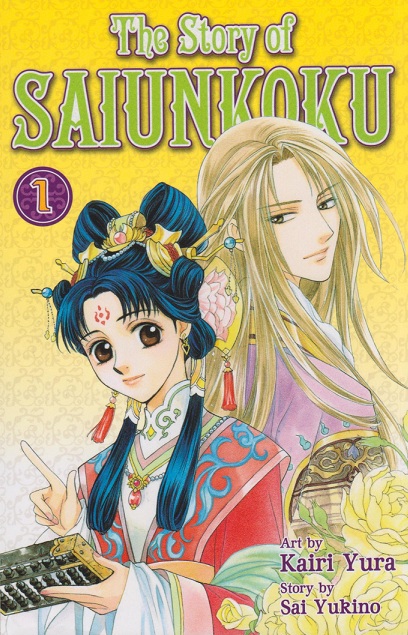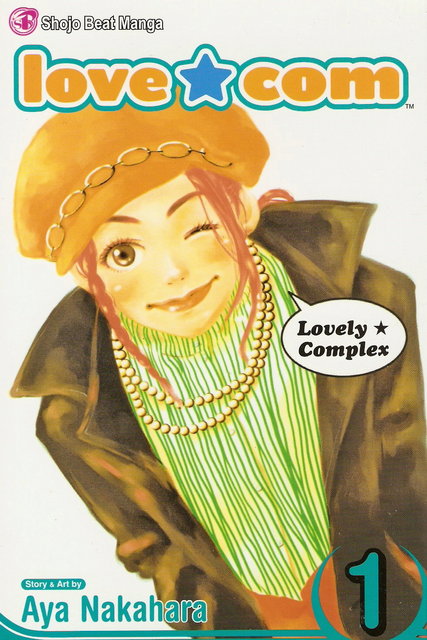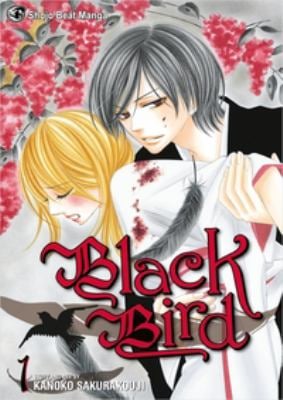I've made no secret of my fondness for shoujo manga, and equally so I've made no secret of my despair over how some shoujo series revel in the very worst of the genre: insipid heroines, abusive love interests, shallow relationships, lackluster art, and so forth. So this month I'm doing a sort of compare and contrast of selected shoujo works, reviewing two works with a similar theme that show how said theme can be done right and how it can be done wrong.
I'll get things going with an extremely popular shoujo series - indeed, until Kodansha started rereleasing
Sailor Moon, it was one of the best selling shoujo series on the market. It's also one of the worst things I've read since starting this project.
BLACK BIRD (Burakku Baado), by Kanoko Sakurakoji. First published in 2007, and first published in North America in 2009.
PLOT:
Misao Harada has been able to see spirits and demons all her life, and sadly all it's done for her is make her appear spacey and clumsy to normal people since they can't see the spirit world tormenting her. Her only consolation comes from the fond but vague memories of Kyo, a young boy who could also see the spirits and promised to come back to Misao someday.
It turns out Kyo is true to his word and then some. It also turns out he's a demon, a tengyu to be specific. He has returned because for reasons unknown, Misao is a particularly tasty morsel to the denizens of the spirit world, the kind that only comes once a century. To drink her blood will grant long life; to eat her flesh will bestow eternal youth; her hand in marriage will bring great prosperity to any demon clan that claims her. Now that she is 16, it's open season on Misao, and Kyo is determined to make Misao his at any cost. Even if it means following her every move, posing as one of Misao's teachers, and fighting off every creature that comes for her, Kyo will have his prize.
STORY:
I was perfectly willing to give this story a chance, even if the "ordinary kid is tormented by various spirits" has been done before by better and more interesting manga. Then Kyo showed up and I spent the rest of the volume wavering somewhere between revulsion and rage.
I thought I had seen hopeless, hapless shoujo heroines before, but Misao truly takes the cake. She is never at any point proactive in this story. Once the demons start showing up, all she does is cry, cower, and bleed, always waiting for someone else to save her. I'm not saying that she should be able to kick loads of demon butt, but would it honestly hurt the story if she at least ATTEMPTED to defend herself? Could she have just enough brain cells to rub together to know that maybe she shouldn't follow strangers lest they turn out to be demons out to eat/screw/do god knows what to her? If she were carried off any more often, she might as well have a handle on her back to better facilitate her frequent kidnappings. Personality-wise she's not much better, because Misao spends the majority of her time vacillating between two moods: hating Kyo for being so controlling and (OF COURSE) falling in love with him because he's hot and he saves her all the time.
Misao is only half of the problem I had with
Black Bird. The other half is Kyo, or as I had mentally dubbed him halfway though, "Professor Bad Touch." He's like a walking checklist of cheesy shoujo fetishes. Don't believe me? Let me count the ways. He's a dark, tall and handsome (1) supernatural being (2) with wings (3). He's an older man (4) who sometimes wears glasses (5) to better play the role of Misao's teacher (6). He's a white knight (7), always rescuing her and whisking her away to his large mansion, complete with servant (8), and he heals her injuries by suggestively licking her body (9). There's probably more I could think of with time, but I suspect you all get the idea. He's also quite the stalker, which for some might count as #10. From the moment he reintroduces himself into Misao's life, Kyo is determined that no one but him will possess Misao, and that she WILL marry him. This is not phrased as a question, but as a command or at least as a certainty that Misao is stupid for fighting against. Then, to make doubly sure that Misao is never too far away, Kyo installs himself at her school as a teacher, so now he is literally an authority figure to whom Misao has to obey. At no point could I discern Kyo having any real affection for Misao - all he feels for her is possessiveness, and frankly that makes him no different that the demons he fights. But we the readers aren't supposed to think that. We're supposed to swoon over him, because he's just
so handsome and
so wonderful and
so caring and how romantic it is that his every consuming thought is about this girl who is
totally unworthy of him!
Why do I get the feeling that
Twilight fans would love the hell out of this manga?
Speaking of
Twilight, there's a frequent focus on bloodsucking and bloodplay between our two leads, whether it's a classic vampire-style feeding or licking injuries on various parts of Misao's body. These acts are always staged like sex acts, which adds enough weird subtext on its own. It only gets worse when you consider that Misao is not always conscious for these acts, and it was at these points that I longed to find and press the BAD TOUCH WE NEED AN ADULT button. It's weird how much emphasis is placed on this considering that Kyo is NOT a vampire and tengyu are not generally known for eating people or blood, which leads me to think that this is something of a favored kink for Sakurakoji. .Unlike her, I don't get off on the combination of blood and sex, and this meant that a lot of the so-called 'sexy times' in this manga left me feeling rather disturbed, and it's just as much because of the "TMI, Sakurakoji-san" element as it is about the blood itself.
What can I say for
Black Bird? Well, I am genuinely surprised that it's such a popular series because it's built around two utterly vacuous characters, one being weak and helpless, the other less a character and more a mass of clichés. It expects us to cheer on what is in truth a possessive and one-sided relationship and to thrill at a very literal combination of sex and violence. Mostly what I wanted to do with
Black Bird was to throw it at the wall as hard as possible and try to scrub the taint of its creepiness off of my flesh.
ART:
The artwork as a whole is terribly unremarkable. The character designs are extremely generic, to the point where Sakurakoji seems to be able to draw only one sort of male face (generic bishonen) and one female face (simpering moeblob, so simplified that they often appear to have no noses). They're not terribly expressive, either. For example, Kyo only seems to have two emotions: Mildly Pissed and Creepy Leering. There's a nice variety in panel shape and size, but they're assembled in a rather messy manner and it detracts from the big splash panels of Kyo which I presume were meant to be the highlight. She's not much better with action, as she tends to just break out the speed lines and call it a day. Even the backgrounds are rather plain.
I've already gone over the squickiness of Sakurakoji's blood fetish, but there's something else in the art that rather disturbs me. There's a lot of imagery, from the cover to the last splash pages, that puts emphasis on Misao being restrained, unconscious, or is visibly upset. Such imagery only emphasizes Misao's helplessness and the inequality of her relationship with Kyo, and when combined with the story and the bloodplay, the whole thing comes off as rather sleezy and exploitative, like an old-fashioned bodice-ripper. It would be one thing if all of this was done so on purpose and the reader was supposed to be conscious of the innate wrongness and messed-up quality of the romance, but this is played perfectly straight, and that's what makes this work so utterly offensive to me.
PRESENTATION:
Nothing to see here.
RATING:

Avoid this one like the plague.
Black Bird's notions of romance are creepy, sleezy, and despicable, and visually it's dull as dishwater. Leave this one to the Twihards and find yourself some GOOD shoujo to read.
This series is published by Viz. The series is complete with 18 volumes in Japan. 16 volumes have been published so far, and all are currently in print.
You can purchase this volume and many more like it through RightStuf.com!
 The Story of Saiunkoku is an underrated gem. Its average looking artwork and pandering premise conceal a solid story supported by a clever, interesting lead.
The Story of Saiunkoku is an underrated gem. Its average looking artwork and pandering premise conceal a solid story supported by a clever, interesting lead.





